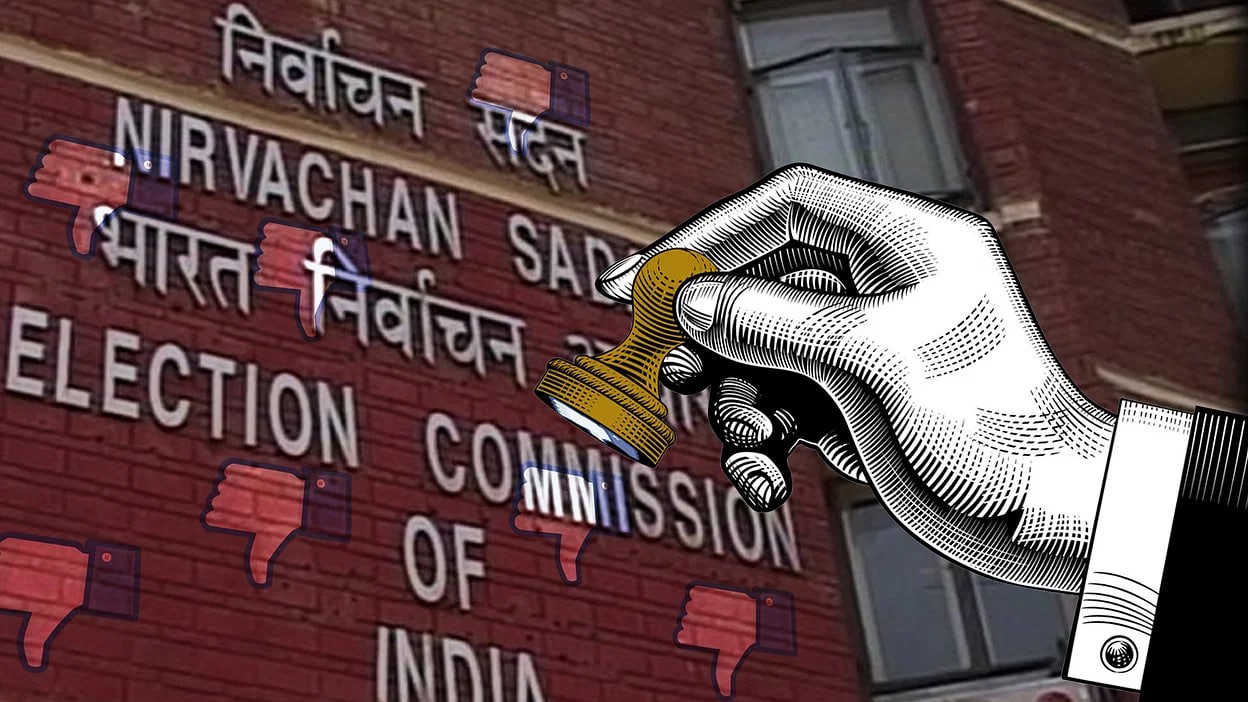Free Courses Sale ends Soon, Get It Now


Free Courses Sale ends Soon, Get It Now



Copyright infringement not intended
Context: The recent power struggle between the top leaders over the leadership of the Nationalist Congress Party (NCP) has raised questions about how the Election Commission (EC) deals with such disputes. The EC is the constitutional authority that decides which faction of a party gets to use its name and symbol in case of a split.
Details
How does the EC decide on splits within parties?
What happened before 1968?
Except for the test of the majority to resolve a symbolic dispute, is there another way?
Must-Read Articles:
ANTI-DEFECTION LAW: https://www.iasgyan.in/daily-current-affairs/anti-defection-law-34
REGISTERED UNRECOGNISED POLITICAL PARTIES: https://www.iasgyan.in/daily-current-affairs/registered-unrecognised-political-parties
Election Commission of India: https://www.iasgyan.in/daily-current-affairs/appointment-of-election-commissioners
|
PRACTICE QUESTION Q. What is the test of a majority that the ECI may undertake to decide which faction of a split party gets the symbol? A) The faction that has the support of more than half of the members of the party's central committee. B) The faction that has the support of more than half of the members of the party's legislature wing. C) The faction that has the support of more than half of the members of both the party's central committee and legislature wing. D) The faction that has the support of more than half of the members of either the party's central committee or legislature wing. Answer: C Explanation: The ECI may take into account all the available facts and circumstances and undertake a test of majority. The test of majority is based on the support of more than half of the members of both the party's central committee and legislature wing. Q. What is the difference between reserved symbols and free symbols? A) Reserved symbols are allotted to recognised national and state parties, while free symbols are allotted to registered but unrecognized parties and independent candidates. B) Reserved symbols are allotted to registered but unrecognized parties and independent candidates, while free symbols are allotted to recognised national and state parties. C) Reserved symbols are allotted to parties that have been in existence for more than five years, while free symbols are allotted to parties that have been in existence for less than five years. D) Reserved symbols are allotted to parties that have a minimum vote share of 6% in any state or national election, while free symbols are allotted to parties that have a lower vote share. Answer: A Explanation: Reserved symbols are allotted to recognised national and state parties, while free symbols are allotted to registered but unrecognized parties and independent candidates. The ECI has a pool of nearly 200 free symbols that are allotted to the thousands of unrecognized regional parties that pop up before elections. |
© 2024 iasgyan. All right reserved